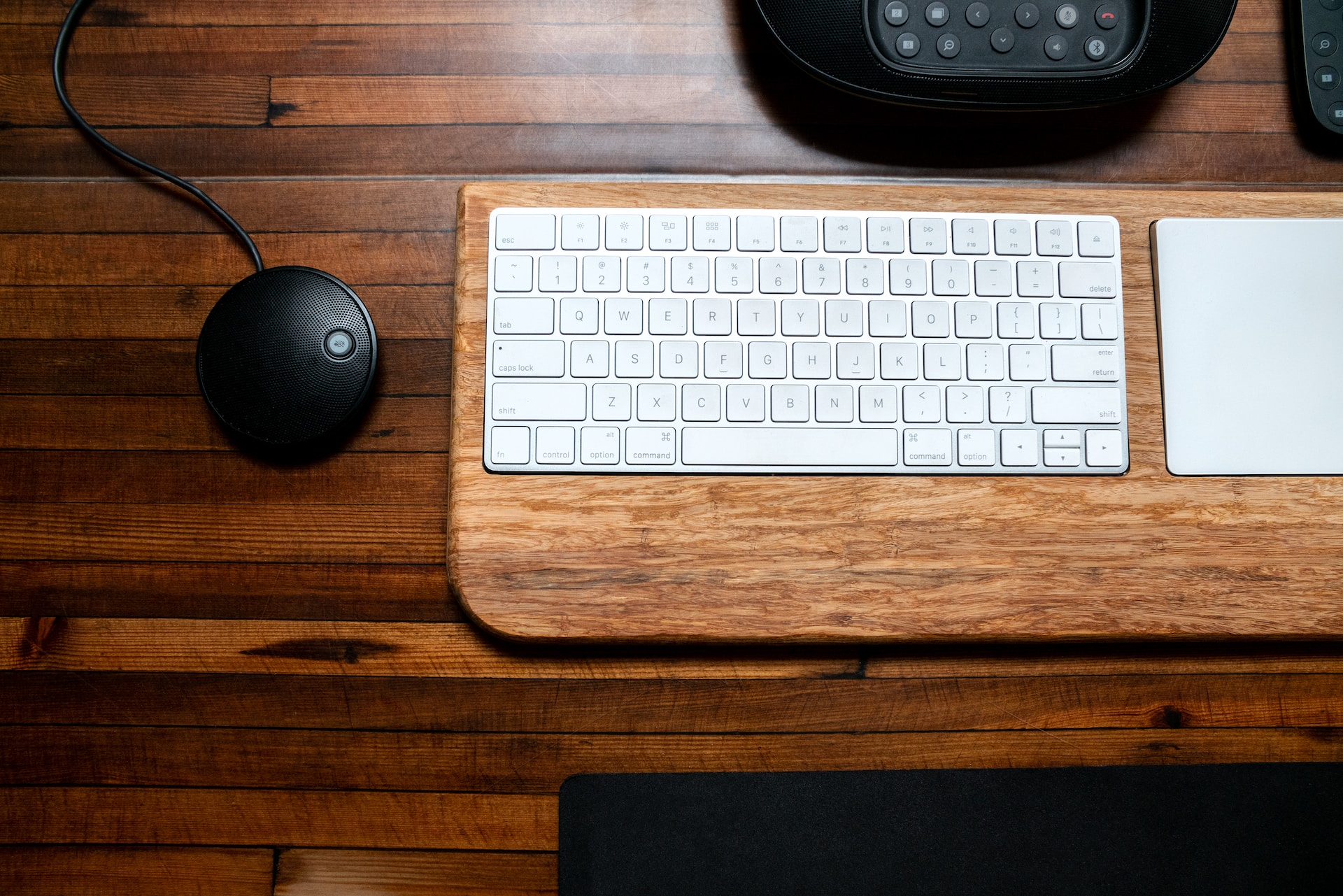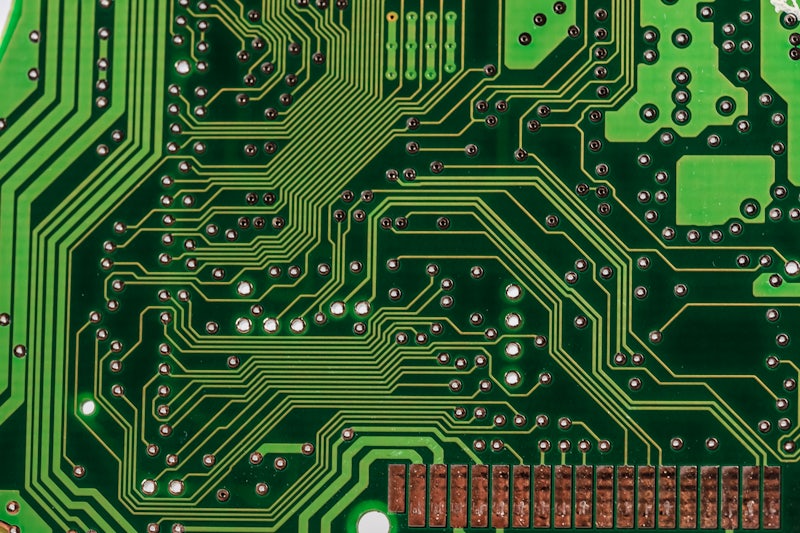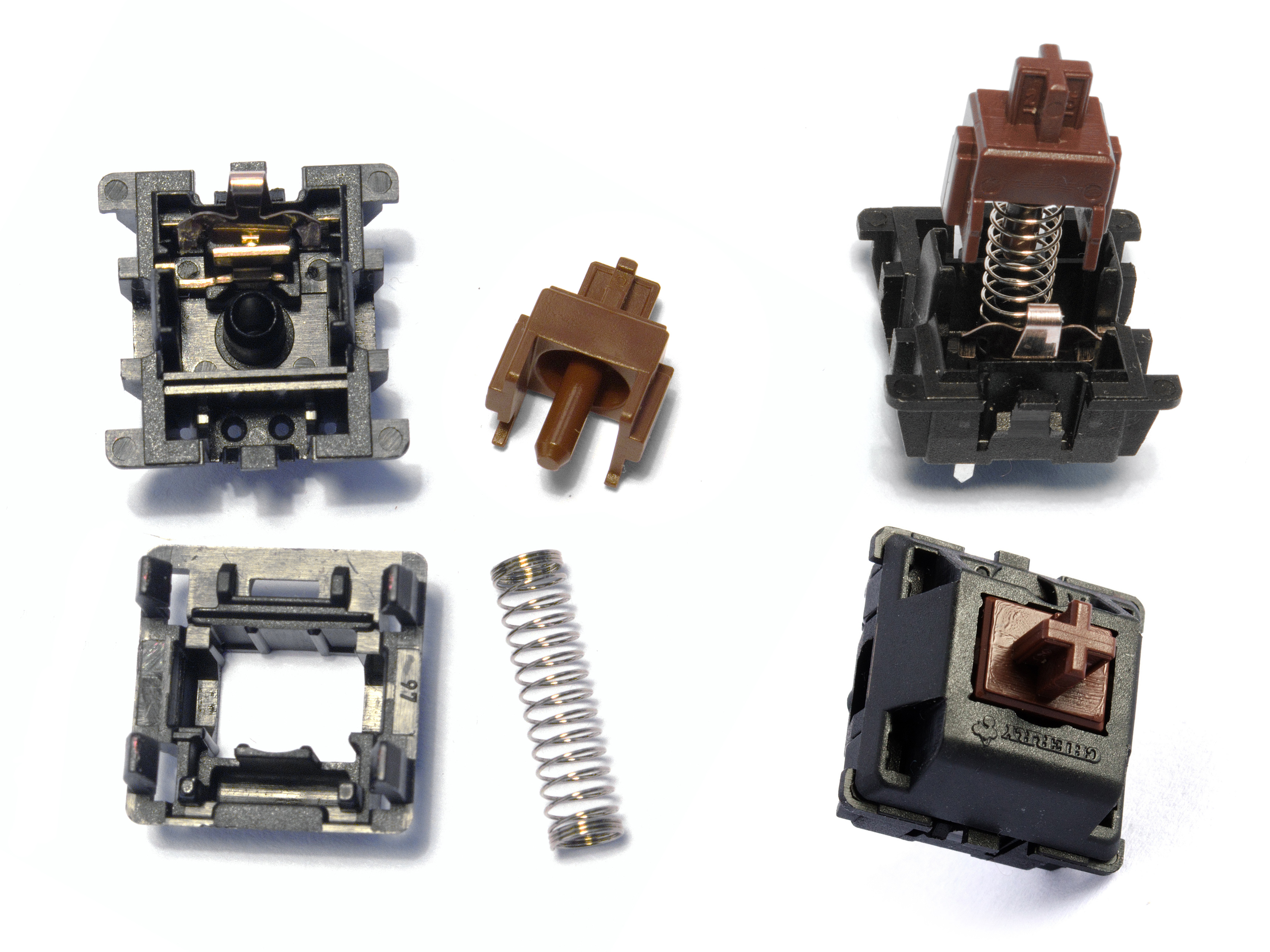
September 11, 2023
Pavle Ignjatović
How keyboards work?
It is very likely that you have used the computer at some time in your life, and probably work on it every day. Then, you certainly know what the keyboard is, but have you ever wondered how it works? Well, turns out that the principles behind its work are quite simple, so we will explain them in this new Onlinity Learning article.
The printed circuit board (PCB) is a board made from insulating materials (most usually fibre-reinforced plastic) with copper wires precisely imprinted onto it. They also have a layer of coating to prevent corrosion and short circuits. Connectors for all the keys are put on board and wires in these places are interrupted.

Printed circuit board. Credits: https://www.rawpixel.com/search/printed%20circuit
Button connectors (switches) are parts that hold the keys in place. They consist of several parts: a keycap, stem, slider, switch housings, spring and two metal contact leaves.
The keycap is the button, the part pressed to type a letter. It lays on a stem, fitted through the slider. Metal contacts are put in a way that enables them to be separated, but connected on click. Switch housings hold everything straight and stable.

Parts of the keyboard switch. Credits: https://www.rawpixel.com/search/printed%20circuit